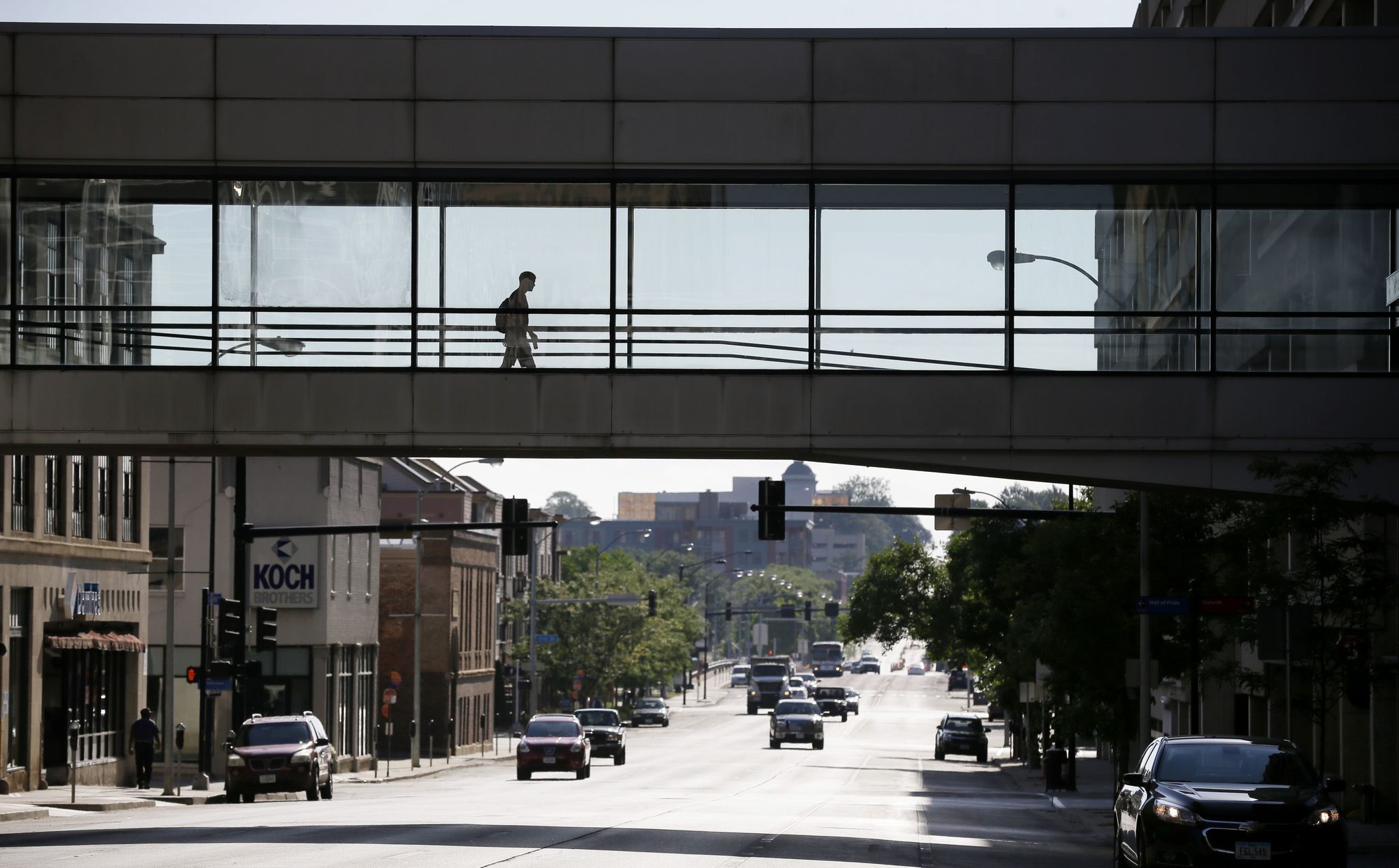DES MOINES, Iowa — In a city where cranes and construction barriers mark a surge in new downtown apartments, hotels and offices, the sidewalks in Des Moines’ core can be strangely quiet.
The reason is about 20 feet overhead, where bridges link a climate-controlled skywalk system that snakes through nearly four miles of downtown. When the skywalk was built in the 1970s, the idea was to protect office workers from the frigid winters in Iowa’s largest city and encourage businesses to resist the pull to suburban office parks. It was an instant success.
But one era’s brainstorm has become the next generation’s headache as cities are now desperate to add life to downtown. For them, the question is how to create lively streets when no one walks outside anymore.
Across the country, a debate is growing over what to do with the cozy corridors, bridges and tunnels that have helped create urban ghost towns. Cincinnati decided to dismantle half its one-mile plus system and Baltimore has taken down seven bridges, with plans to remove two more, to push people back onto the streets. Minneapolis, which is spending $50 million to overhaul its glitzy Nicollet Mall downtown, is being urged by some residents to do the same. Spokane, Washington, which has one the most extensive systems, is turning away from any further expansion.
It’s an excruciating choice, giving up on something because it’s become too effective.
“I’d get rid of them if we could, but we could never do it,” said Erin Olson-Douglas, a city planner in Des Moines, which wants a vibrant center city to keep its young workers from moving somewhere livelier.
Skywalks have joined pedestrian malls, downtown parking garages and new traffic patterns as the latest downtown experiment to achieve mixed or unintended results over the years.
While cities were flailing with new strategies, young people and baby boomers suddenly rediscovered urban living and provided new hope—but mostly for places with a lively atmosphere.
Tom Murphy, an urban revitalization expert and former mayor of Pittsburgh, said holding onto those young workers is essential because they’re highly sought by employers.
“For our history, it was always that people went where the jobs were,” Murphy said. “For the first time, we are now watching as jobs go where the people are.”
Thus, Des Moines’ dilemma. The city initially spent about $12 million in public money on its skywalks, with private landowners contributing an equal amount, and succeeded in keeping 75,000 jobs downtown.
Now, seeking a lively scene, the city is spending $4.5 million to rebuild Walnut Street, a shopping district that long ago was packed with shoppers but, thanks in part to the skywalks, is usually deserted.
Max Stanco opened the Lord Midas clothing store downtown last spring to take advantage of people moving back downtown, but said the empty streets are killing him.
“If the customers don’t come in and shop, we can’t stay much longer,” he said.
Minneapolis is the most vivid example of one city project apparently contradicting another.
With its brutal winters, Minneapolis was among the first cities to build so-called “skyways” in the 1960s and recently added paths to connect its new football stadium, bringing the system to about nine miles. But Minneapolis urban blogger Sam Newberg insists the city should be tearing them down — he suggests taking out one bridge a year.
“It just breaks my heart to see so many people in the skyways even when it’s nice weather,” Newberg said, and while the downtown Nicollet Mall below often has few pedestrians for its restaurants and stores.
The mall upgrade could be another $50 million wasted, he said.
“We’re deluding ourselves over and over again, and this is the third overhaul of Nicollet Mall,” he said.
Beth Elliott, a Minneapolis city planner, is more optimistic about the mall, and said the indoor corridors are now an ingrained part of life.
“It is a love-hate relationship,” Elliott said.
Jon Snyder, who was a member of the City Council in Spokane when that city was expanding its skywalks, said the city is now worried about something that was once a matter of local pride.
“It’s not like skywalks don’t have benefits, but they signal we’ve given up on our street level environment,” said Snyder, who has since left the council and now advises Washington’s governor on outdoor issues.
But in cold weather cities, it won’t be easy to get people to walk outside again.
“I feel almost like a hypocrite,” said Ben Lockin, who works in a downtown investment company and ducks into the skywalk at the first opportunity. “As a person from Des Moines, I’d like to see more shops open, but I love the skywalks.”
Talk to us
> Give us your news tips.
> Send us a letter to the editor.
> More Herald contact information.
























